DIY garden structures with materials you have on hand
Thanks to the University of Maryland / Maryland Grows this informative article on DIY garden structures.
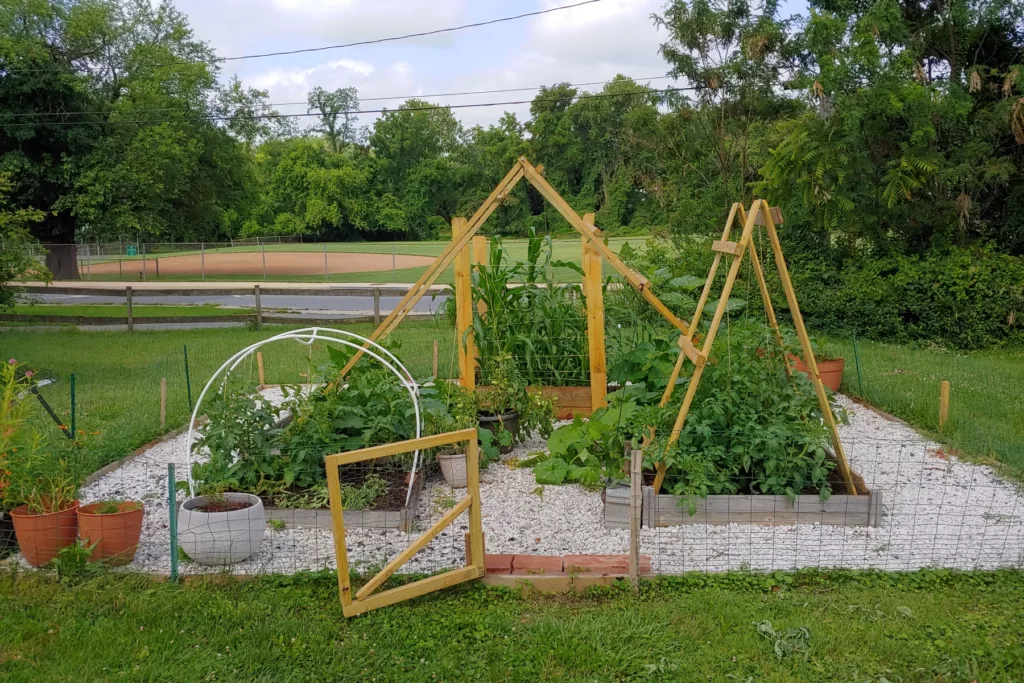
I had a lot of goals for improving my garden since last year’s adventure which meant new things to build! The current prices of lumber and materials, plus my only basic carpentry skills are limiting. I didn’t want to go all out creating beautiful, sturdy, perfect designs and structures from new materials purchased specifically for these builds.
Next, I wanted to quickly build tomato support, floating row cover and a large trellis for climbing plants. I also wanted to make a deer fence, and a garden gate. The hope was that I could do it all without spending too much at the hardware store or spending a ton of time planning. That meant largely using scrap wood I had laying around or cheap materials like PVC, and going for it.
Mega trellis
I’m trying tromboncino squash this year which really climbs, and I also wanted to allow cucumbers to climb, so I thought I’d build some sort of large support object. I had a bunch of 2×2, 10 ft long lengths of wood left from contractor work in my basement. That would be good material. I wanted something tall that I could walk under and pluck vegetables from. Plus, I wanted it to be non-permanent.
I decided to make this ladder-like structure with a hinge at the top. It would be collapsable and could be stored in the garage without taking up a lot of space. I bought a metal threaded rod. And then drilled holes through the wood at the ends that would make the apex of the structure. Next I ran the rod through those holes to make a hinge. The rest is built with wood screws. Metal eyelets were screwed into the wood. That enabled me to run twine crisscrossed through the structure to allow plants to climb.
The structure was a bit wobbly on its own since it is so tall and not wide. Because of this, I worried about it getting blown over during a storm — especially with leafy plants acting as sails. I tied rope to two cinder blocks that pull down and away to give it more stability.
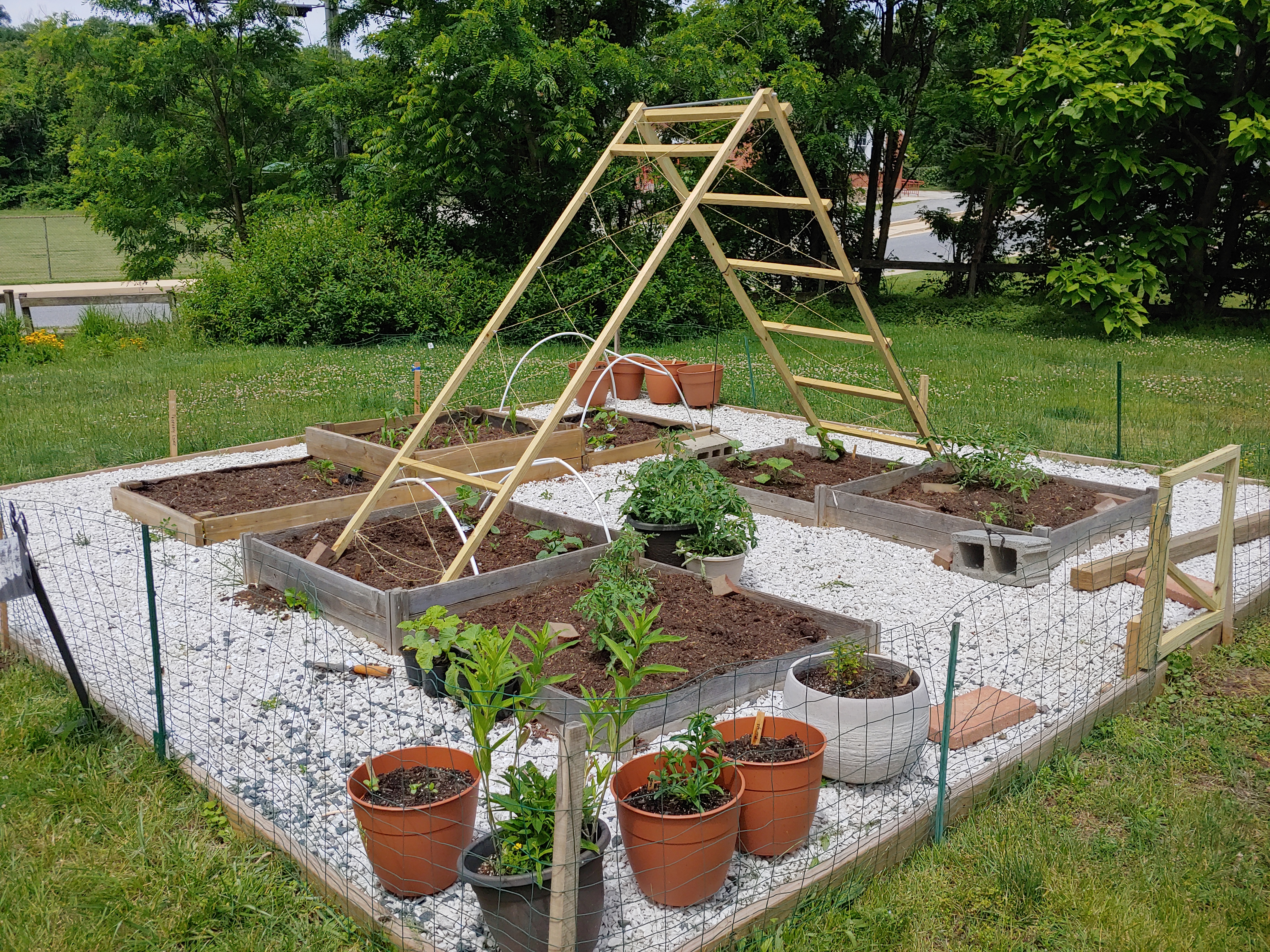
Fence panel tomato hangers
I saw these cool tomato clips online; you can have some sort of structure to hang a string from, then use these clips to fasten joints of the tomato plant to the string to hold it up. With these, all I would have to do for tomato support is to make some sort of triangle or tripod with a high point I could tie string to. It seemed like a simple way to build something. Also, I liked the way my DIY garden structures folded flat for storage.

Again, leftover from contractor work, I had some parts of wood fencing from a recently replaced segment of fence I had done. I took off a bunch of the boards, leaving the two outside ones connected by the horizontal segments, and connected two of the removed boards to the others via hinges at the top. I added more horizontal support at the top and bottom, then added eyelets at the top crossbar to tie rope to. This fits right in my 4’x4′ tomato bed. The strings hang down and with the clips, hold up the tomatoes.
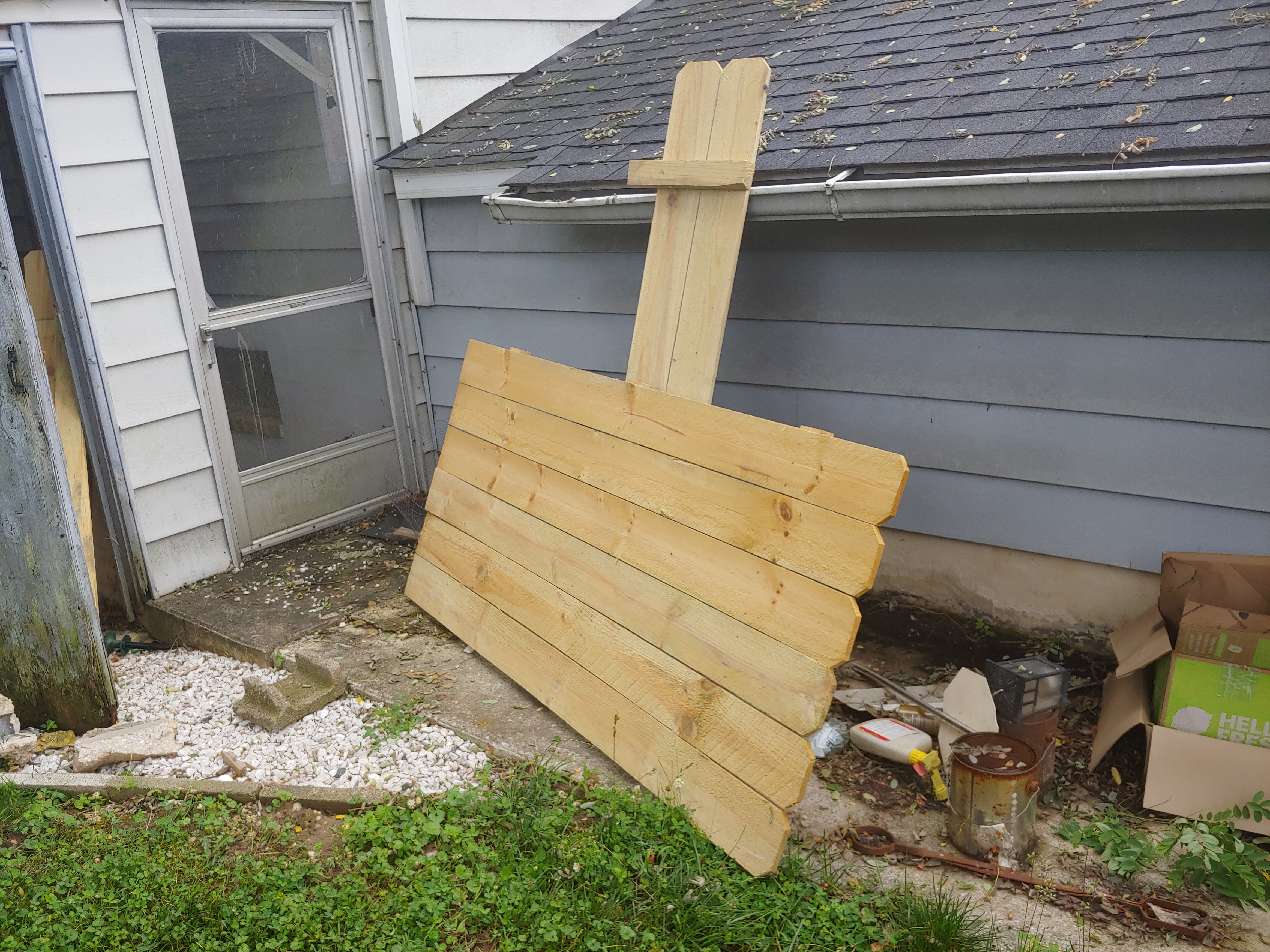
Easy PVC piping structures
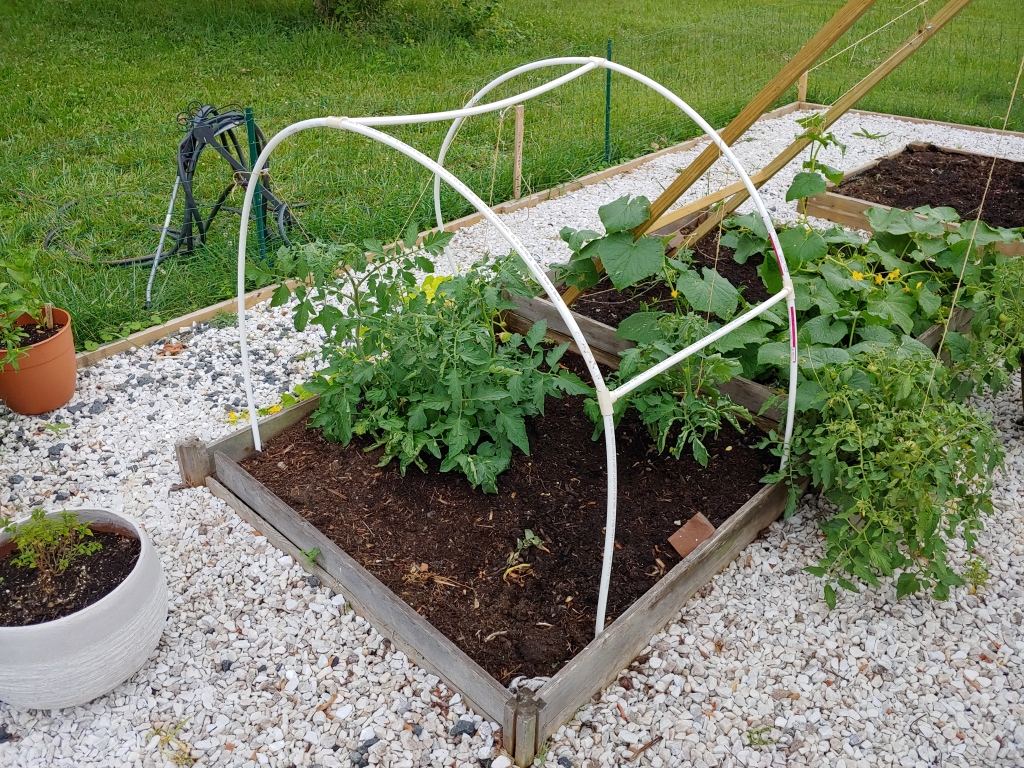
I went to the hardware store and picked up several lengths of 5 ft white PVC pipe and a handful of T connectors. I didn’t have an exact plan, and I probably should have bought a bit more of everything, but I was able to start with building floating row cover for some of my squash, and then when that wasn’t needed, I reconfigured it into support for my tomatoes.
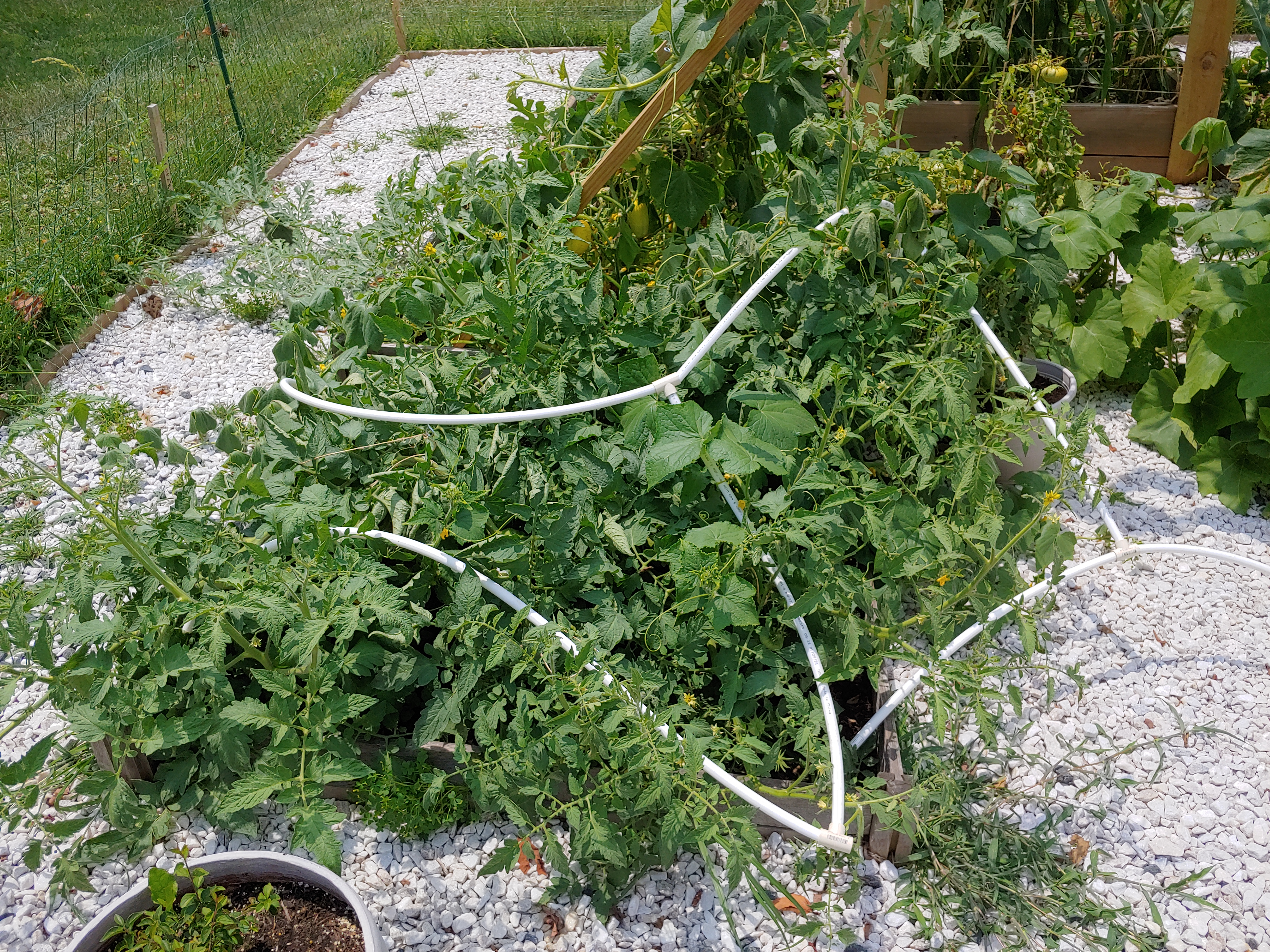
Cut the pipes
I cut the pipes: some in a third and 2/3 lengths. Connecting them with the T connectors, bending, and wedging the ends of the pipes into the corners of the raised beds, I was able to make an archway over my 4ft square section of raised bed. For floating row cover on squash, I draped row cover fabric over it and pinned it down with bricks around the edges. For tomato support, I drilled a few holes, screwed eyelet hardware in, attached twine, and used tomato clips to hold up tomatoes.
The 1/2 in. pipe is a little flimsy. I ran out of enough pipe to make as much support as I wanted in my DIY garden structures.
I left on vacation for a week and came back to totally collapsed tomatoes. No big surprise there. This design is good for row cover, but not for tomatoes beyond a certain point. I need stronger materials for this one.
After the PVC failure, I wanted a quick way to build something that would hold up the tomatoes. I was running low on quality materials. Therefore, I made this unimpressive support. One was made from two fence panel boards, and the other longest piece of scrap wood I had around. Two wood screws connect them at the top. I don’t think I will keep this for next year as it isn’t collapsible. Also, it isn’t that sturdy, and I would hope to make something better if I need something next season. Clips were used again to hold up the plants.
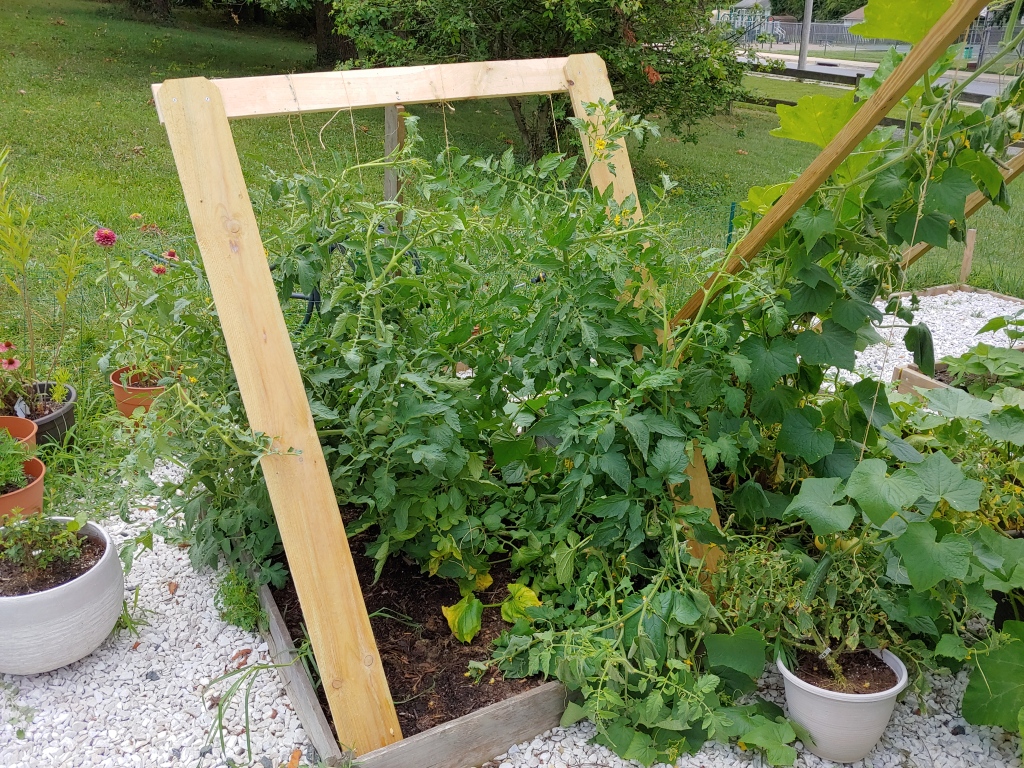
Micro deer fence
I’ve got one 4’x4′ raised bed segment with corn in it that got devastated last year, presumably by deer. Originally this year, I was planning on building a tall deer fence around my entire garden area, similar to this one. I understood that the fence doesn’t need to be particularly strong – just tall enough they couldn’t jump the DIY garden structures.
Then I had the idea, “Dan, you clever guy – why don’t you fence ONLY the corn and save a lot of effort!” In addition, I decided to make a tall, twine fence around just the corn.
Again, with leftover fencing boards, I just screwed four of the boards vertically to the walls of the raised beds, tapped some nails in them for string, and wove twine around the whole thing.
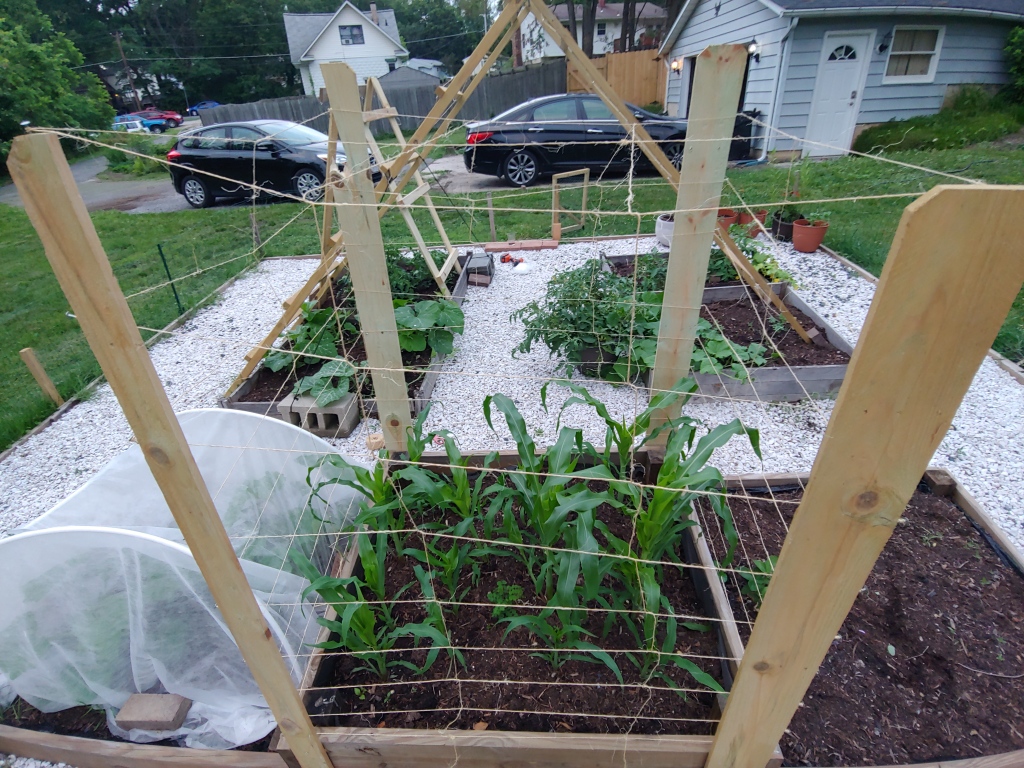
It was soon after I finished stringing this thing up that I realized the error in my logic (most readers here were probably yelling at their screens): yeah, a deer cannot jump into my corn field, but they sure could stick their snouts through the gaps in the twine and much fairly unhindered.
I mused about stapling a segment of the rodent fence material used for the outer fence around the four boards, but in the end, laziness and the sense of experimentation helped me decide to leave it as-is and see what happened. Perhaps the deer would be weirded-out enough by the twine to leave it alone.
As of this writing, we are beginning to harvest corn, and it hasn’t been touched which is further than we got last year. Fingers crossed this trend continues.
Building DIY garden structures is fun
It’s been fun building. I’ve done this all without breaking out a ruler or tape measure! Mostly, it’s hammer, nails, wood screws, drill, and string that I’m using. Nothing fancy. Luckily, produce does not care if all corners are square, and good enough is generally good enough if you don’t have to support more than a couple plants.
In conclusion, I’ll mention is a little gate panel built from the absolute last pieces of the 2×2 wood. I didn’t even have enough to make a diagonal cross piece that went from corner to corner. I stapled a bit of wire fencing onto it and put a slide bolt to shut it. My wife was tired of having to hop the wire fence to get into the garden, so this was the solution. Again, not strong or beautiful, but it works.
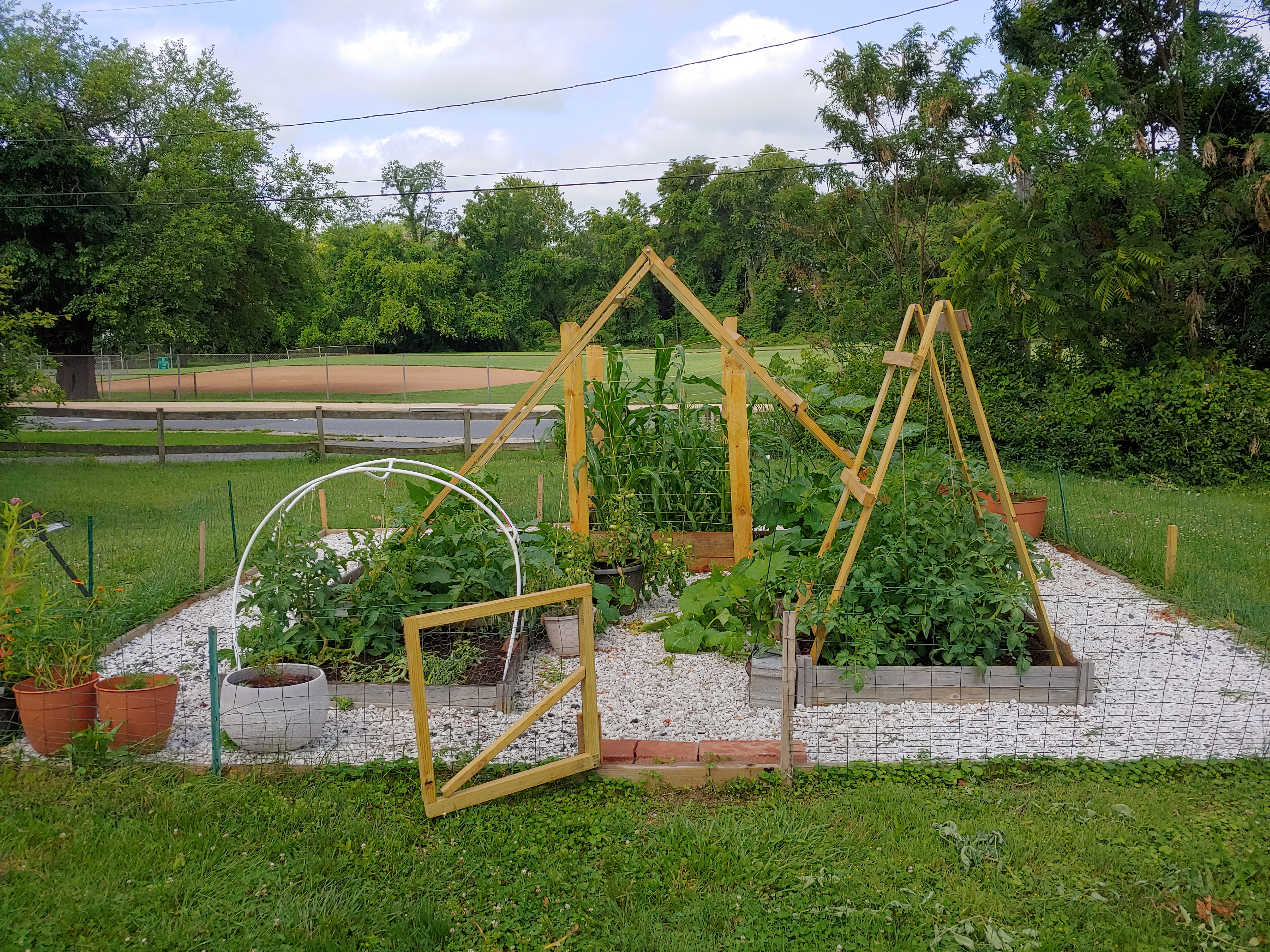
Feel free to take a look at my posts from last year’s growing season.
– Dan Adler
HGIC Web Support and Video Production
Looking to buy or sell your home (with or without a garden), contact Gigi today. Oh by the way I’m never too busy for any of your referrals!






Recent Comments